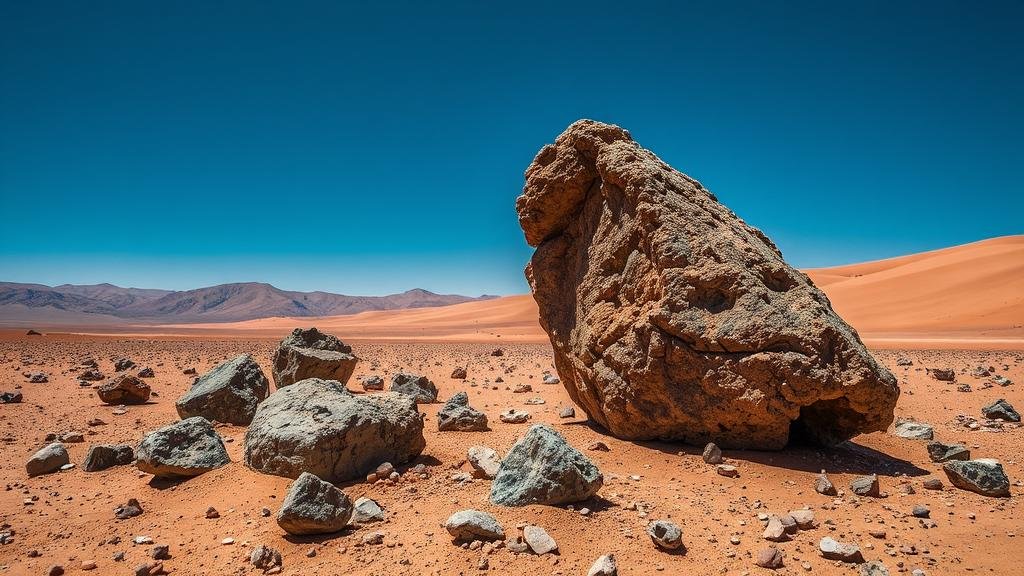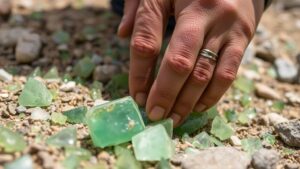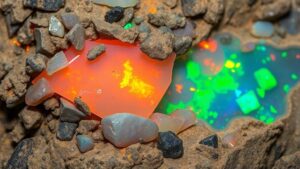Meteorite Mysteries: Unlocking the Cosmic Clues in Earth’s Remote Deserts
Meteorite Mysteries: Unlocking the Cosmic Clues in Earths Remote Deserts
For rockhounds and mineral collectors, the allure of meteorites is captivating. These fascinating cosmic specimens not only tell stories of our universe but also offer insights into planetary formation and the history of celestial bodies. This article explores how to effectively hunt for meteorites in Earth’s remote deserts, revealing the secrets they hold.
The Significance of Meteorites
Meteorites are remnants of asteroids, comets, and other celestial bodies that survive their passage through the Earths atmosphere. Each specimen offers valuable scientific clues, potentially unlocking mysteries about the early solar system. According to NASA, more than 61,000 meteorites have been cataloged, with only a fraction of these having been discovered in desert environments.
The Best Desert Locations for Meteorite Hunting
Deserts offer ideal conditions for meteorite hunting due to their arid climate and sparse vegetation, which make it easier to spot meteorites against the sandy backdrop. Some of the most fruitful locations include:
- Atacama Desert, Chile: Known for its hyper-arid conditions, this desert has one of the highest rates of meteorite recovery in the world, particularly iron meteorites.
- Great Sand Dunes National Park, Colorado: A unique environment with diverse landscapes that attract a variety of meteorites, including stony and carbonaceous types.
- Namib Desert, Namibia: This region is famous not only for its stunning vistas but also for significant finds such as the famous Hoba meteorite, weighing over 60 tons.
Identifying Meteorites: Tips and Techniques
When searching for meteorites, it is crucial to know what to look for, as many terrestrial rocks can easily be mistaken for meteorites. Here are some indicators to help distinguish meteorites from regular rocks:
- Weight: Meteorites are often denser than typical rocks. A metallic, heavy feel is a positive indicator.
- Magnetism: Many meteorites contain iron and can be attracted to magnets.
- Fusion Crust: A thin, glassy exterior, caused by the intense heat of atmospheric entry, coats many meteorites.
Tools for the Trade
Equipping oneself with the right tools can significantly enhance the meteorite hunting experience. Essential tools include:
- Magnet: A simple yet effective way to test for metallic meteorites.
- Hand Lens: Helps in examining the surface texture and potential fusion crust.
- GPS Device: To track and revisit specific locations of interest.
Scientific Perspectives: Analyzing Meteorite Composition
Once a meteorite is discovered, its composition can reveal much about its origins. Meteorites are categorized into three primary types:
- Stony Meteorites: Comprising silicate minerals, they make up about 94% of all meteorites.
- Iron Meteorites: Composed mainly of iron and nickel, representing around 5% of meteorite finds.
- Stony-Iron Meteorites: Combining elements of both stony and iron types, these are rare and highly valued.
Analytical techniques such as X-ray diffraction and electron microscopy help scientists assess mineral content, structure, and origin. For example, the renowned Allende meteorite, which fell in Mexico in 1969, is primarily a carbonaceous chondrite and is notable for its rich content of organic compounds, potentially offering clues to the organic origins of life.
Legal and Ethical Considerations
Collecting meteorites involves specific legal and ethical responsibilities. It is vital to respect land ownership and obtain necessary permits, especially in sensitive ecological areas. Also, meteorite collectors should consider the implications of removing artifacts from their natural environment and aim to preserve their scientific value. For example:
- Always check local laws regarding meteorite collection.
- Join organized meteorite hunting groups to network and share knowledge.
Actionable Takeaways
For the passionate rockhound or mineral collector, meteorites present a thrilling challenge. By understanding where to search, how to identify genuine meteorites, and the scientific background behind these unique specimens, collectors can have rewarding experiences. Remember to equip yourself with the right tools, stay informed of legal issues, and enjoy the adventure of unlocking the cosmic mysteries that lie hidden in our deserts.


